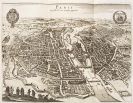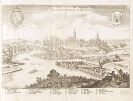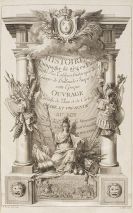
James Cook
Marton
1728 -
Hawaii
1779
James Cook was born in Marton (Yorkshire) in 1728. He grew up as the son of a day laborer, received his education in a school and, at 17, became an assistant in a general store. At 18, Cook hired on board coal-carrying ships between Newcastle upon Tyne and London. In 1755, Cook moved over to the Royal Navy, where he qualified for ship’s master (helmsman) in only four years through intense self-study. During the years 1756-67, Cook mapped the North Atlantic coastal waters along Newfoundland, the Saint Lawrence Seaway and other parts of the eastern coast of Canada on extended sea voyages.
In 1768-71, Cook traveled from Cape Horn via Tahiti and New Zealand all the way to Australia. He mapped the coasts which to that point were uncharted, discovered that New Zealand is a double island, and was the first European to reach the Australian continent. On board with him were a botanist and several British astronomers who were interested in the course of Venus over Tahiti and hoped to gain information from their observations to help calculate the distance from the earth to the sun.
Cook made another voyage of discovery in 1772-75 to look for a supposed gigantic South Continent, the "Terra Australis". James Cook sailed to the Hervey Islands (later called the Cook Islands), the New Hebrides, the Marquesas Islands, and the Easter Islands; he discovered New Caledonia, the southern Sandwich Islands and the south Georgian Island group. He advanced as far as 71 degrees South latitude. With his voyage, Cook proved that the continent "Terra Australis", as it had been imagined, did not exist.
Once back in England, James Cook enjoyed high social standing. He became a member of the Royal Society. He was awarded the Copley Medal for his scientific achievements.
In 1776, James Cook started off on a third great voyage of discovery. His goal was to find a northwest passage between the Atlantic and the Pacific. Cook was unsuccessful, but he discovered and charted several islands, among them Hawaii and Kiribati, traveled Alaska’s coast and explored the Bering Strait. Forced to go back because of the pack ice, James Cook landed in Hawaii in January, 1779. A violation of a tabu by his crew created conflicts with the indigenous people, which Cook paid for with his life. His crew returned to England in 1780.
Would you like to sell a work by James Cook?
Infos for seller









